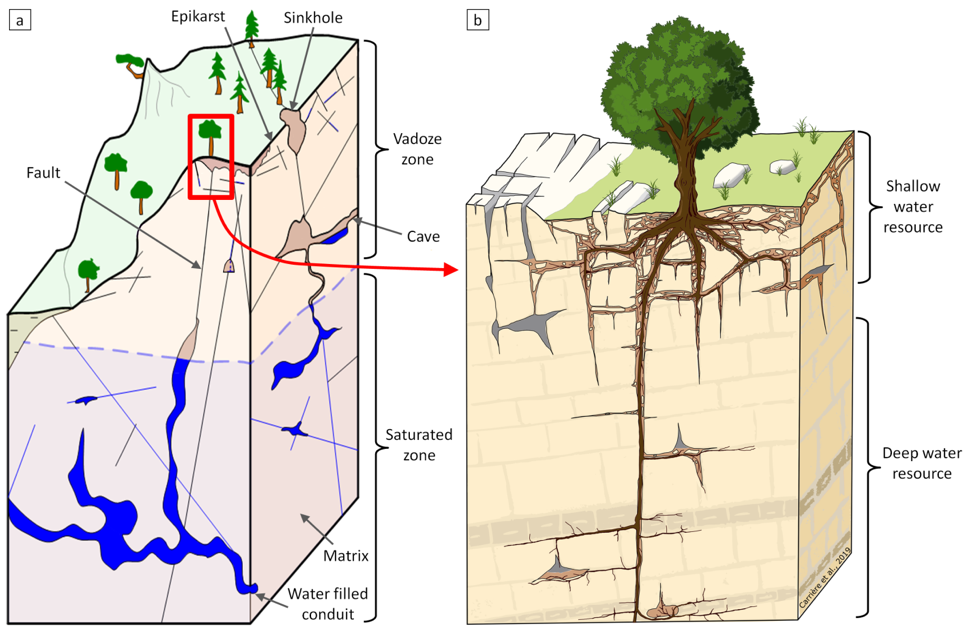The role of deep vadose zone water in tree transpiration during droughtperiods in karst settings – Insights from isotopic tracing and leaf waterpotential
Karst environments are unusual because their dry, stony and shallow soils seem to be unfavorable to veg-etation, and yet they are often covered with forests. How can trees survive in these environments? Wheredo they find the water that allows them to survive? This study uses midday and predawn water poten-tials and xylem water isotopes of branches to assess tree water status and the origin of transpired water.Monitoring was conducted during the summers of 2014 and 2015 in two dissimilar plots ofMediterranean forest located in karst environments. The results show that the three monitored tree spe-cies (Abies albaMill,Fagus sylvaticaL, andQuercus ilexL.) use deep water resources present in the karstvadose zone (unsaturated zone) more intensively during drier years.Quercus ilex, a species well- adaptedto water stress, which grows at the drier site, uses the deep water resource very early in the summer sea-son. Conversely, the two other species exploit the deep water resource only during severe drought. Theseresults open up new perspectives to a better understanding of ecohydrological equilibrium and toimproved water balance modeling in karst forest settings.
http://dialectical-ecologist.fr/wp-content/uploads/2019/11/1-s2.0-S0048969719343232-main.pdf
